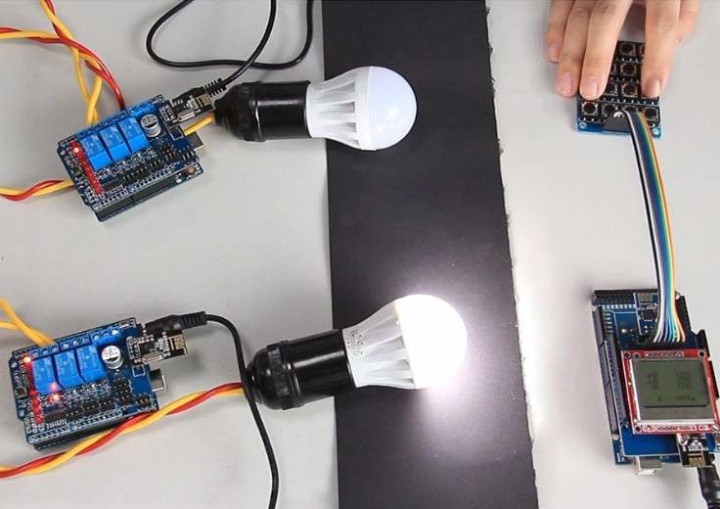Review: Sunfounder IoT Shield Kit for Arduino delivers the goods
Dangerous relays
The relays connect to ports D3-D5, each having a 3-way screw terminal connector. These relays can switch up to 750 VA of power (3 A @ 250 VAC), which is not enormous, but enough to get you killed. The contacts are too close together to pass any safety norms in Europe and they are also too close to the Arduino power and analogue connectors, and the reset button (pressing it may reset your brain as well). Be very careful!
The Gateway Shield
Like the Node Shield this shield tries to exploit the Arduino ports as much as possible. The analogue port (A0-A4, A5 seems to be unconnected) controls an MM74C922 key encoder chip, and, as on the Node Shield, the NRF24L01 module uses ports D8-D13 while D0 & D1 function as a serial port.The LCD, a Nokia 5110, is driven through a bit-banged SPI port on D4-D7. Note that the LCD can be detached and then mounted the wrong way around. When you do this, it will stop working and you may even damage it. Therefore, make sure that it is always plugged in correctly: the side with the most metal should be closest to the shield’s edge and NRF24L01 module.
Arduino Uno or Mega2560?
The ESP-01 Wi-Fi module, provided as a separate module, communicates over a serial port. When the Gateway Shield is used with an Arduino Uno, it is controlled over a software serial port on D2 and D3. An Arduino Mega2560, on the other hand, has four hardware serial ports, and in this case Sunfounder suggests using Serial1 on D18 & D19. This can be done with two jumper wires (not included) and the 2x6 pin header. The wiring of this header is a bit strange as there are two ways of connecting D18 & D19. Also the schematic incorrectly shows D0 & D1 wired to it instead of D2 and D3.Read full article
Hide full article


Discussion (0 comments)